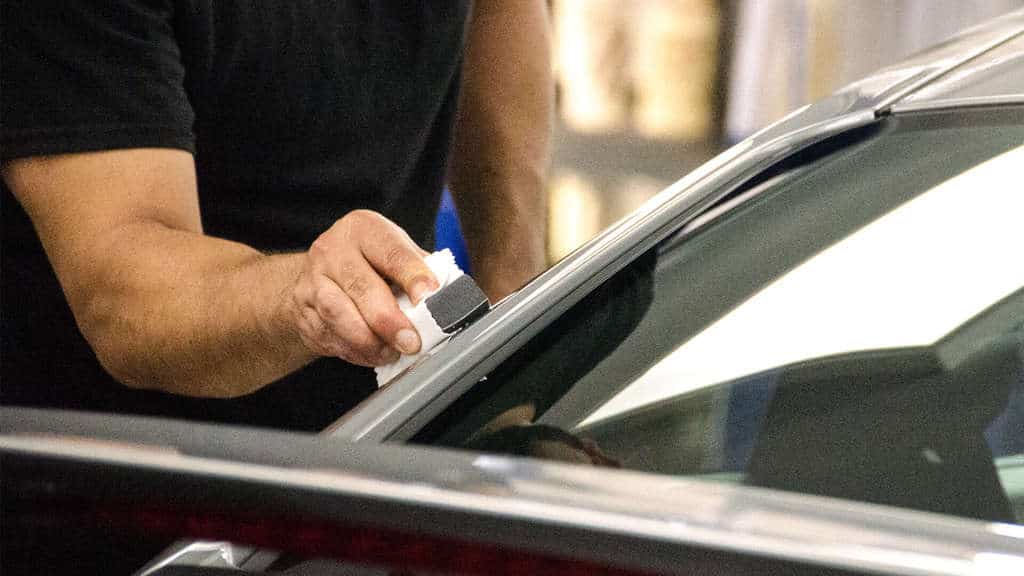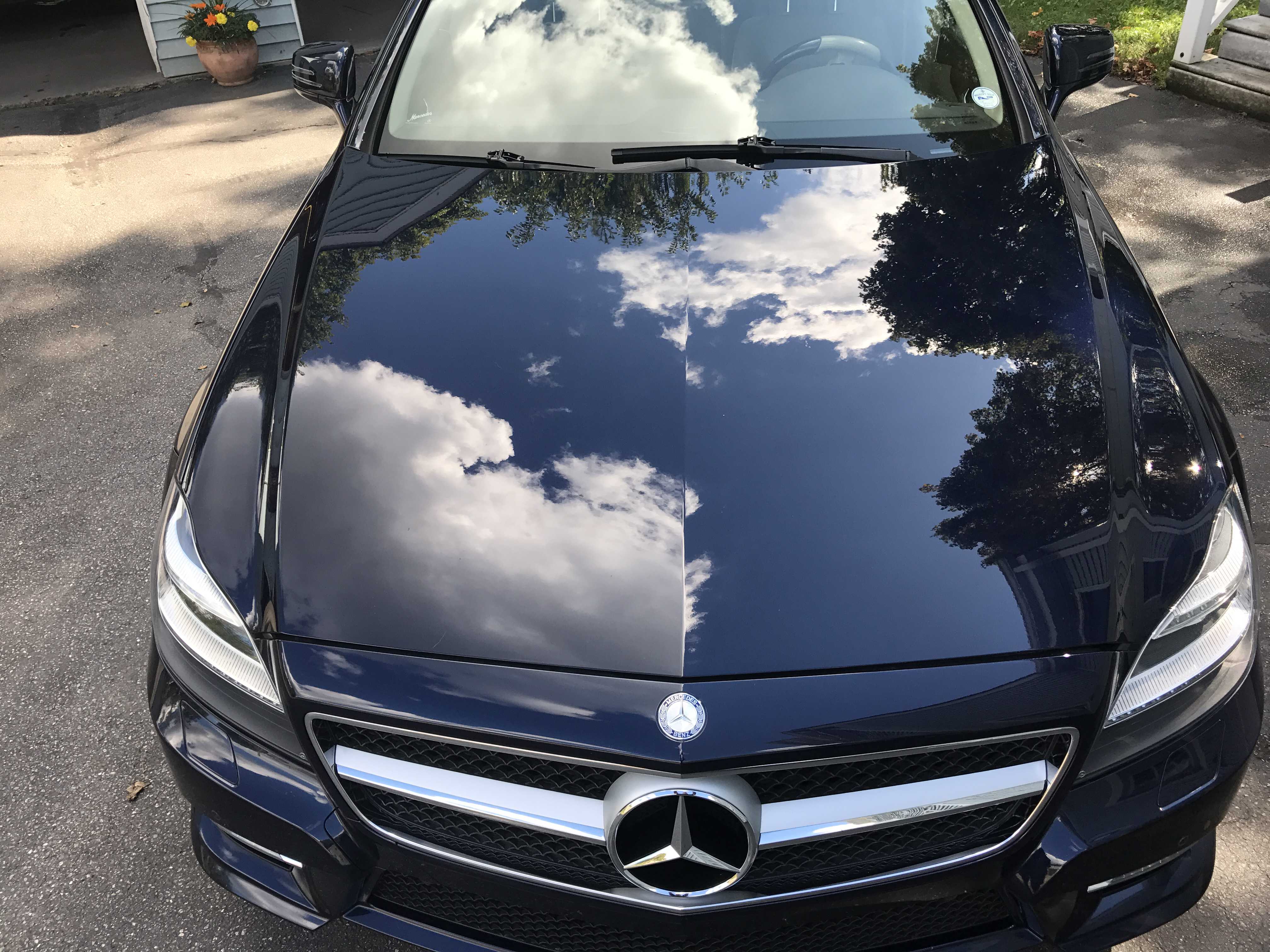How Ceramic Coating Enhances Your Vehicle's Protection and Appearance
How Ceramic Coating Enhances Your Vehicle's Protection and Appearance
Blog Article
Ceramic Covering vs. Standard Wax: Which Provides Much Better Long-Term Defense?
The debate in between ceramic coverings and conventional wax for vehicle defense has gathered substantial focus among automotive fanatics and specialists alike. Ceramic finishings boast premium longevity and resistance to environmental variables, yet the complexity of their application increases questions concerning ease of access and usefulness.
Overview of Ceramic Finishing
Ceramic finish has acquired significant appeal among auto enthusiasts and detailers alike as a result of its sophisticated safety qualities. This cutting-edge technology is made to produce a durable, hydrophobic guard over a vehicle's paint surface, considerably boosting its resistance to environmental contaminants such as dirt, UV rays, and chemical discolorations. Unlike typical wax, which supplies a short-lived layer of security, ceramic coatings bond at a molecular degree with the paint, offering durable toughness-- usually expanding past two years with appropriate upkeep.
The application procedure involves careful preparation of the vehicle's surface, including cleansing and brightening to make certain optimal bond. When used, the covering cures to develop a durable layer that not just includes deepness and gloss to the paint yet additionally simplifies maintenance. With its hydrophobic properties, ceramic finish permits water and dust to glide off more easily, lowering the frequency of washes and reducing the danger of swirl marks.
In addition, ceramic finishes are readily available in various solutions, allowing users to choose products customized to their details needs and preferences. Generally, ceramic layer represents a significant improvement in paint security innovation, providing remarkable performance contrasted to traditional choices.
Introduction of Traditional Wax
Traditionally pertained to as a staple in automobile care, wax works as a prominent option for those looking for a straightforward approach to boost and safeguard their automobile's paint - ceramic coating. Automotive wax normally comprises all-natural components, such as carnauba, or synthetic substances, designed to create a safety layer on the surface of the paint. This layer not only improves the automobile's gloss and radiate but also offers a barrier versus environmental contaminants
The application of wax is generally straightforward, making it easily accessible for both professionals and do it yourself lovers. It can be applied by hand or maker, enabling convenience in the describing process. Once used, wax calls for a healing duration, after which it sets to create a safety shell. Wax is likewise understood for its ability to repel water, advertising a beading result that assists in the avoidance of water places and deterioration.
Nonetheless, while wax works for improving the aesthetic appeal of a vehicle, it is essential to keep in mind that the security it supplies might necessitate much more regular reapplication contrasted to different products, such as ceramic layers. Generally, typical wax remains a preferred alternative for those prioritizing simplicity of usage and prompt aesthetic enhancement.
Longevity and Durability Comparison
While both ceramic coverings and typical wax offer safety benefits for auto paint, their sturdiness and long life vary considerably. Standard wax, typically made from natural carnauba or synthetic polymers, normally provides a protective layer that lasts approximately 3 to 6 months. This reasonably brief life expectancy demands regular reapplication to maintain optimum protection.
On the other hand, ceramic coverings are engineered from sophisticated nanotechnology, forming a covalent bond with the paint surface. This results in a durable, hydrophobic layer that can sustain for 2 to five years, relying on the product and environmental problems. The premium longevity of ceramic coverings is attributed to their chemical framework, which offers improved resistance to scratches, UV rays, and oxidation.

Security Against Environmental Elements
Securing a vehicle's paint from environmental factors is vital for keeping its look and worth gradually. Autos are constantly exposed to a selection of elements, including UV rays, bird droppings, tree sap, acid rainfall, and roadway grime, all of which can compromise the stability of the paintwork.
Ceramic coatings supply a robust defense against these ecological assailants. Unlike standard wax, which can deteriorate swiftly under UV exposure, ceramic finishes form a long lasting, hydrophobic layer that stands up to the unsafe effects of sunshine and ecological pollutants. This sophisticated modern technology produces a chemical bond with the automobile's surface area, providing superior security that lasts for several years, also in harsh problems.
In contrast, ceramic finishings maintain their protective high qualities longer, significantly lowering the danger of paint damage and making sure that the automobile maintains its visual appeal. As a result, ceramic coatings are progressively identified as the premium option for lasting protection versus ecological aspects.
Application and Maintenance Distinctions
The approaches of application and subsequent upkeep for ceramic coverings and conventional wax differ substantially, impacting the total customer experience and effectiveness of each item. Ceramic coverings call for a more intricate application procedure, commonly involving surface area prep work that consists of cleaning, decontaminating, and polishing the vehicle. Once the surface area is prepared, the ceramic coating is applied in a regulated setting, often requiring professional know-how to ensure appropriate treating and bonding to the paint.

While both items boost vehicle appearance, the longer-lasting defense provided by ceramic coverings might warrant their preliminary investment, in spite of the even more demanding application procedure. Conversely, standard wax continues to be a popular selection for those looking for an easier, albeit short-term, solution.

Verdict
To conclude, ceramic finishings demonstrate substantial benefits over typical wax in regards to durability and ecological defense. With a life-span expanding two to 5 years and exceptional resistance to UV rays, dirt, and chemical discolorations, ceramic layers supply an extra effective service for long-term vehicle upkeep. Although the application process might require professional knowledge, the resulting expense financial savings and lowered frequency of reapplication underscore the worth of ceramic finishings for those looking for optimum vehicle defense.
The discussion between ceramic layers and traditional wax for lorry defense has actually gathered considerable focus amongst automobile lovers and experts alike. Unlike traditional wax, which supplies a short-term layer of protection, ceramic coatings bond at a molecular degree with the paint, supplying durable sturdiness-- usually extending past 2 years with proper upkeep.
While both ceramic coverings and traditional wax deal safety advantages for auto paint, their toughness and long life differ dramatically. For automobile lovers seeking lasting defense, ceramic coverings provide a compelling benefit over typical wax items.
In conclusion, ceramic coatings show substantial advantages over standard wax in terms of longevity and ecological security.
Report this page